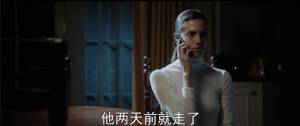Initially, as a group we perceived Film History as having a definitive beginning. However, further investigation shows their are multiple strands that have influenced the Film Industry. This multi-faceted formation has led to, perhaps, an experimental attitude to film making. The thinking that Film is ever evolving without a constantly fixed ‘rule book’ is highlighted in Tom Gunning’s essay entitled, ‘The Cinema of Attraction.’ He discusses how ‘heterogeneity signals a new conception of film history and film form.’ Not only does this solidify that cinema is an ever changing creative media, it also confirms our beliefs as a group.
We have also learned that there are many outside contributing factors to Film History, such as the demands of an audience. The audience not only influences the business of cinema, (e.g Ticket Sales, Expansion due to high demand,) but can even effect the structure of film itself. With Gunning’s ideology in mind, we can also consider how genre hybridity within film leads to contemporary progression. This is particularly evident in the genre of Horror, which in certain films has now incorporated aspects of comic relief. This is evident in Jordan Peele’s film, ‘Get Out,’ which was released in 2017.
This particular scene above illustrates this hybrid of Horror and Comedy which through out Film History hasn’t often been combined. One of the typical conventions of Horror is to create hyped tension. In this scene tension is created through the initial fixed medium shot of the female protagonist, which emulates cautious body language. The traditional Horror style is challenged when it adopts more comedic tropes. As spectators we can observe comic relief through dialogue, more specifically through a heightened change in pitch and tone; reflecting a display of blatant subversion of typical horror conventions
Overall, we have observed that film does not have a simple, clean cut chronology. Although we do believe there is a direct correlation between the desires of an audience and the content and creation of a film.


There are some good initial ideas here and some good attempts to foreground a case study example to offer more depth, but this is not very clearly related to the task and the piece as a whole does not cohere – how does the focus on comedy-horror relate back to the opening statements / how does this assist your understanding of what film history is or might be?